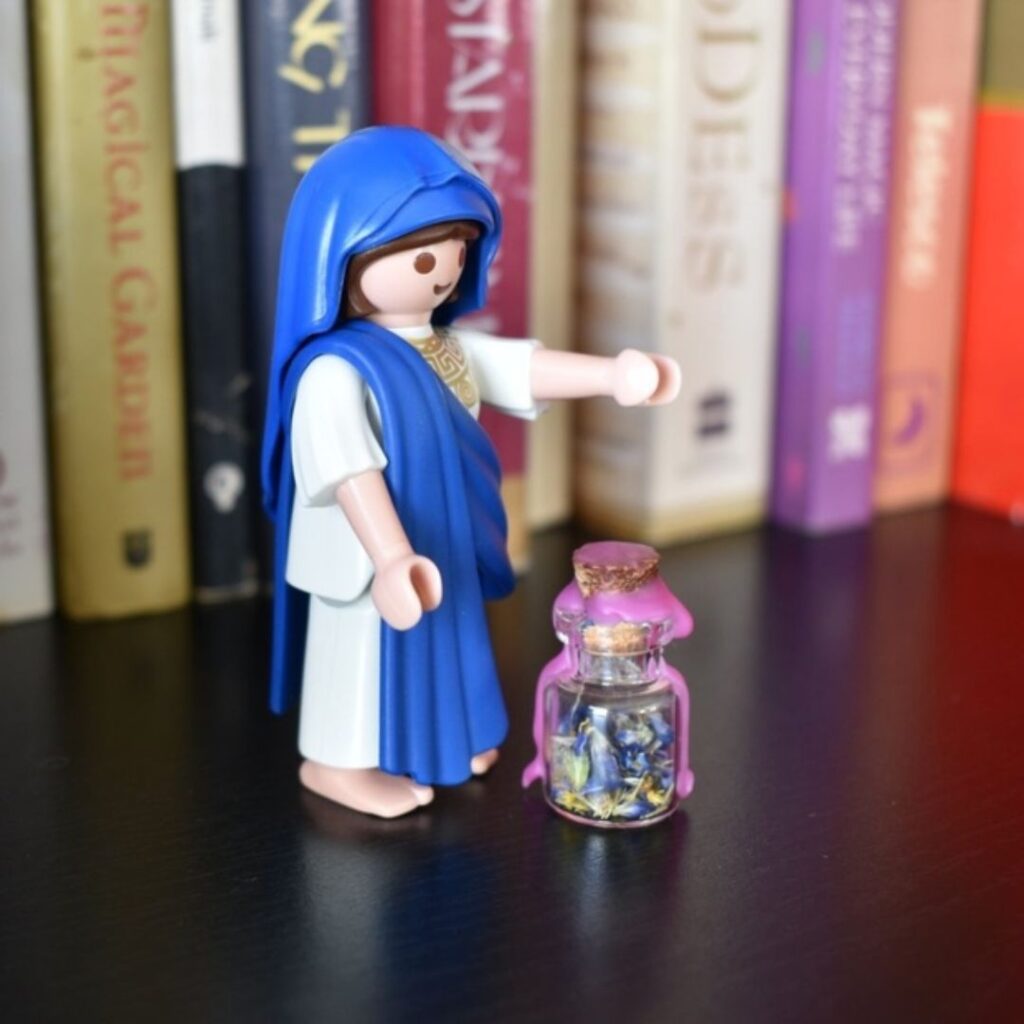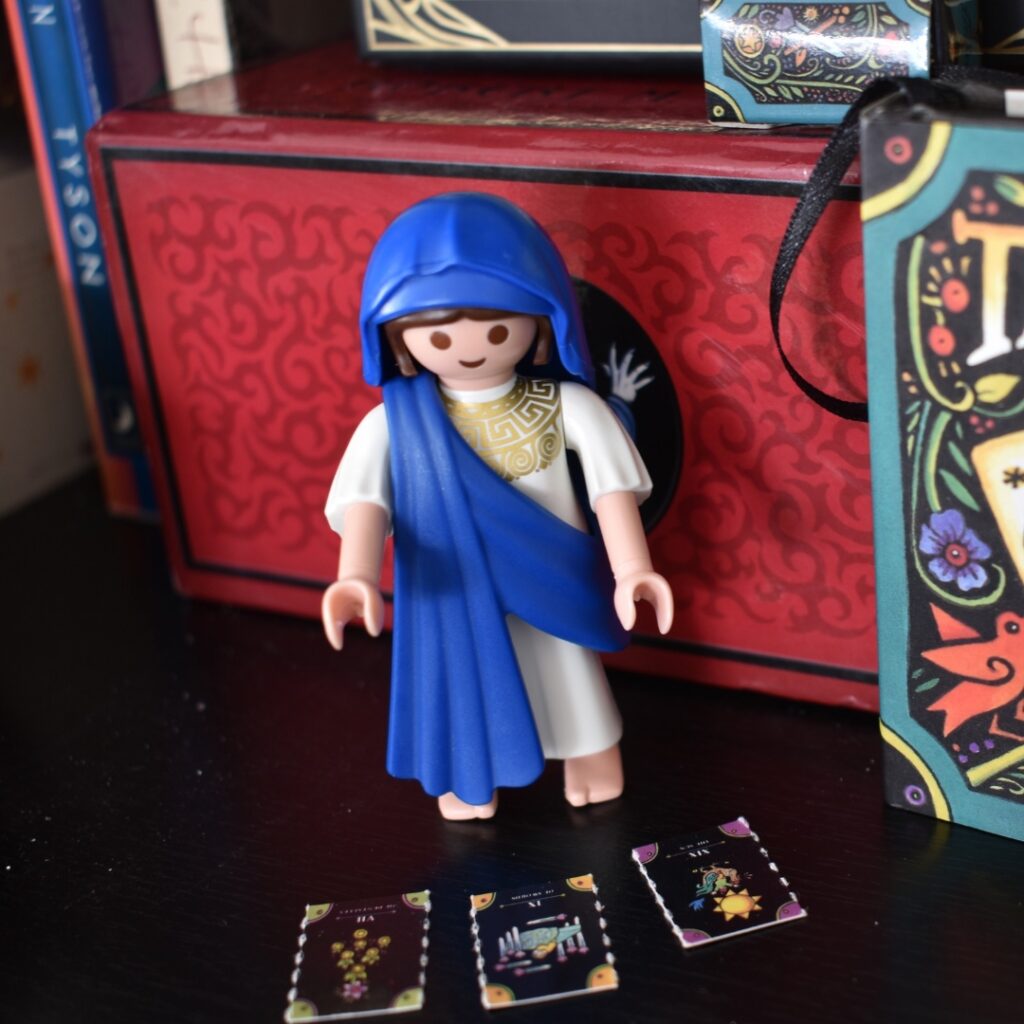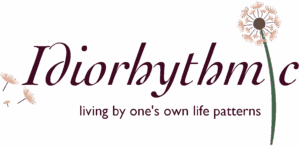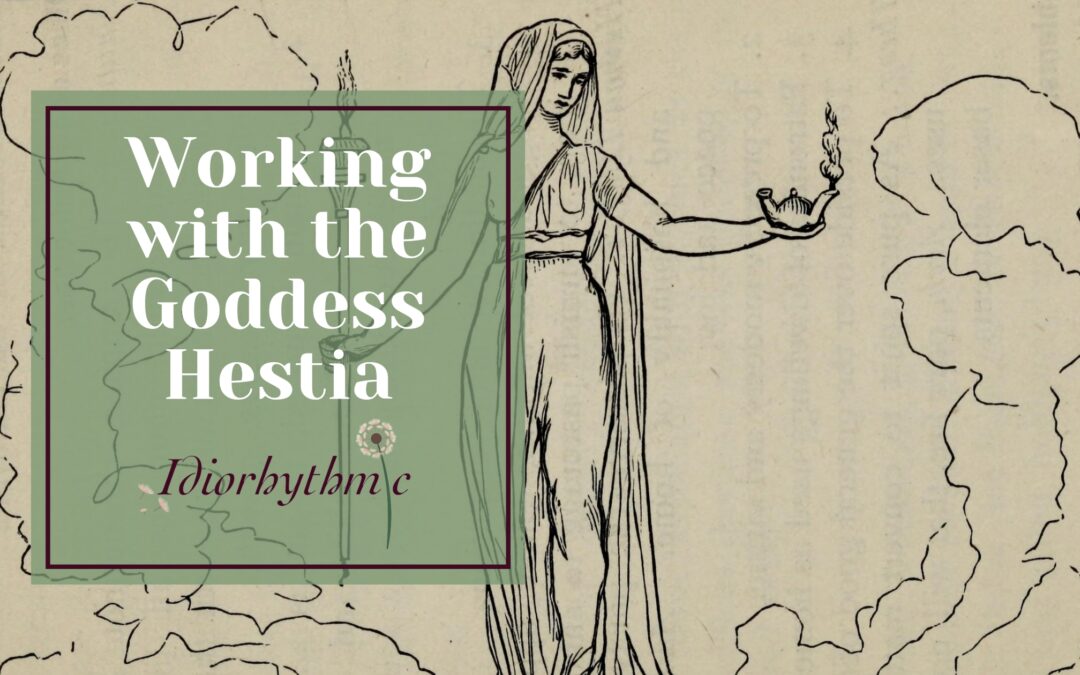I’ve been working with Hestia for several years. I first became aware of her in 1999 when I was going through a very rough time in my life. I was a baby witch, still cutting my teeth on Cunningham and other authors when I read about Hestia in Patricia Telesco’s book 365 Goddess. The moment I read about her and her association to the hearth and the home I immediately felt a connection to her. I was living in a place where I was constantly insecure and uncertain about what my place was and if I was loved. I had no self-esteem and I wasn’t happy. And here was a goddess that was concerned not with love or sexuality or childbirth or any of those other activities that most matronly and maiden goddesses are in charge of. Not that those things aren’t important, but they didn’t resonate with my life at the time.
I couldn’t really relate to being a mother or a wife or a warrior because I was unsettled in my core. Hestia, whose focus is on that base pillar of Maslow’s hierarchy of needs, spoke to me. It took nearly twenty years before I actually started working with Hestia. But when I was ready, so was she.
What I’m going to present in this post is three pronged:
- An introduction to Hestia, who she is and what we know about her.
- We’ll go over why Hestia is still relevant in today’s society and why you might want to work with her.
- Finally we’ll talk about how those first two inform how we can work with her and I’ll give you several steps and activities you can do to get started.

So, who is Hestia?
The short answer is she’s the Greek goddess of the hearth. The full answer is a bit more complicated due to her nature, how the Greeks worshiped her, and the severe lack of primary source material about her.
Before we get to the mythology and the few mentions of her in various Greek writings, let’s consider the hearth, which is her domain. In ancient times the hearth was the life of the home as it provided heat, light and a cooking fire. The hearth wasn’t the flames, but where the flames were housed. This is an important distinction as Hestia is said to tend the flames and to be the goddess of the hearth, but not to be a fire goddess. Why I say this is important is because the hearth was the center of the home, and people tend to get caught up on the fire aspect thinking that they need to have a fireplace or use the stove in their kitchen to work with Hestia, when her place in your home is literally where the heart is. So if that is your kitchen, great, there is a symbolic line from there to the hearth of old. But maybe it’s the family room, or maybe it is your bedroom, or maybe it is your altar. All of those can be your hearth. And later we’ll talk about how to make a hearthstone to strengthen that connection.
According to mythology, Hestia was the first born of Rhea and Kronos. When Kronos learned of a prophecy that he’d be overthrown by one of his children he consumed them, starting with Hestia. This continued until Rhea tricked Kronos into eating a stone wrapped in a blanket instead of their child Zeus. This allowed Zeus to grow up to defeat his father. And in his defeat Kronos threw up all of his children, with Hestia being the last to come out. This is where we get our first description of Hestia being the first and the last as she was the first to be eaten and the last to be expelled.
The next information we get about Hestia is from the Homeric and the Orphic Hymns. Hestia is mentioned in three Homeric Hymns, numbers 5, 24 and 29. In Hymn number 5, which is dedicated to Aphrodite, we learn that:
“Nor yet does the pure maiden Hestia love Aphrodite’s works. She was the first-born child of wily Cronos and youngest too,24 by will of Zeus who holds the aegis, — a queenly maid whom both Poseidon and Apollo sought to wed. But she was wholly unwilling, nay, stubbornly refused; and touching the head of father Zeus who holds the aegis, she, that fair goddess, sware a great oath which has in truth been fulfilled, that she would be a maiden all her days. So Zeus the Father gave her an high honour instead of marriage, and she has her place in the midst of the house and has the richest portion. In all the temples of the gods she has a share of honour, and among all mortal men she is chief of the goddesses.”
And this is where we get our second piece of information about Hestia: she refused to wed and made the mighty Zeus honor that decision. Throughout all the mentions of her she is referred to as a virgin goddess. In the one myth specifically concerning Hestia, she is asleep having had quite a bit to drink at a party on Olympus. As she sleeps, Priapus, the god of animal fertility, tries to assault her, but before he can a donkey saw what was going to happen and started braying, waking up Hestia. She cried out and ran away while the other gods on Olympus became aware of what was going on and ran after Priapus. The fact that this is a story of attempted and not actual rape is a rarity in Greek mythology, once again setting Hestia apart from the other goddesses.
So she is a virgin not only in the fact that she remains unmarried, but also in the fact that she does not engage in sexual intercourse.
Which brings us to the third and final piece of information we get about Hestia from original source material: her status among the other gods. In the Homeric Hymn number 29 which is dedicated to Hestia we are told:
“Hestia, in the high dwellings of all, both deathless gods and men who walk on earth, you have gained an everlasting abode and highest honour: glorious is your portion and your right. For without you mortals hold no banquet,—where one does not duly pour sweet wine in offering to Hestia both first and last.”
This is confirmed in the Orphic Hymn 84 to Hestia which says:
“Hestia … . who dwellest admist great fire’s eternal flame; in sacred rites these ministers are thine, mystics much blessed, holy and divine. In thee the Gods have fixed their dwelling place, strong, stable basis of the mortal race.”
Here we find that Hestia is placed above the Olympians. Zeus may be the king of the gods, but Hestia is the greatest of them all. And this bears out in the widespread worship of Hestia throughout ancient Greek society. Historically, we know that in every city in ancient Greece there was a communal hearth where state sacrifices were made and from which households would light their own flames. More than that, Hestia is the goddess to whom officials made their pledges when they were sworn into office. Both religiously, mythologically and secularly, Hestia was the first and last of the gods.

Why Hestia? Why Now?
Knowing all this about who Hestia is and what she meant to the ancient Greeks is all very interesting, but that doesn’t really answer the question of why should anyone work with Hestia today. Compared to some other deities, like Hecate or Brigid or Freyja, Hestia is more difficult to connect to. She doesn’t come with a bunch of handy correspondences and symbols, she isn’t a matronly or sexy or magical goddess. Today she’s been relegated to the background as a sort of baking, sort of domestic goddess. She’s not flashy. She’s just sort of there. And if you want to get anything meaningful out of a relationship with Hestia, you have to do a lot of the heavy lifting. I don’t think any of that means that it isn’t worthwhile to work with Hestia, it’s just going to require a bit of critical thinking on our part.
Hestia, Goddess of the Public
First off, we have to address our feelings about domesticity. There’s been a lot of weirdness about the home sphere over the last few decades. And while a lot of the discourse has been helpful in breaking down misogynistic beliefs about a “woman’s place” or housework or what it means to keep house, a lot of it has gotten very toxic. From the pushback in “manospheres” about who should be doing the housework to the “tradwife” trend that glamorizes 1950s housewives in a way that was never the reality at the time. It doesn’t help that domestic chores are viewed as meaningless and never-ending and cumbersome. So, when we talk about a goddess who is associated with the home, we tend to apply those feelings to her.
But again, while Hestia’s place of worship was and is the hearth, which was fundamental in so many domestic activities, she’s not a domestic goddess in the sense that her domain is sweeping the floor and baking bread. So, while we can work with her when we engage in housekeeping, that is not the limit, but only the beginning.
So let’s start with Hestia’s connection to the state, which extends her reach beyond the home and into the public arena. That connection means that she can be called on for any political actions, social justice issues, public welfare concerns, etc. Hestia is not a goddess to sit around when politicians aren’t living up to their promises or when injustice is rampant. She very much embodies the essence of both the micro in the sense of family prosperity and order and the macro in the sense that societies are only as strong as their weakest link. That’s why she is suited for issues of child and family welfare, for unhoused people, for those who are seeking a better life. She is not a conservative god. She is a goddess that enacted her will on the ruling god for her own benefit. She sides with the poor and oppressed, not the wealthy and privileged.
Hestia, Goddess of Families of All Stripes
Because she said no to being a wife, and remains a virgin, it is easy to view her as not family orientated, especially if you are looking for a motherly figure. And it is true that she isn’t that type of goddess, but that doesn’t mean that she isn’t a goddess involved with family. Hestia has big aunt energy. She’s the one who you go to talk to when your own mother isn’t around or listening. She looks after those who don’t have a loving or supportive family at home. This is especially true for asexual and aromantic people. Her domain is the hearth, which is the center of the home, and there are no decrees on what makes a family.
Furthermore, she is from a time when the nuclear family didn’t exist. Extended family, found family, gay, straight, trans, and everyone else is welcome at her hearth. So she’s the perfect deity to call on when you are having family issues because she will listen and offer her own insight and advice, especially when it comes to siblings (she did spend time in the stomach of her father with ten of her siblings, so she knows about cramped quarters). She is the goddess for those who don’t get hung up on “traditional” definitions of family.
Hestia, Goddess of Her Own Self
Speaking of enacting her will, Hestia is a goddess of self-determination. She is not a fading flower or the uwu character that the media today tries to portray her as. Part of this is Robert Grave’s fault. In his 1955 book The Greek Myths, Graves made up a myth that Hestia gave up her throne so that Dionysus could be seated among the twelve Olympians. This story has no basis in original source material, but it was picked up and became a known “myth” of Hestia. That, along with her being relegated to the domestic sphere meant that she has often been misunderstood as some sort of self-effacing goddess, instead of the bad-ass deity that said, “No thanks,” to marriage.
This means that she can be called on to help you when you need a boost of self-confidence, or need to set boundaries. She is especially useful to work with if you are dealing with man-splainers, either online, in your workplace, or social circles. If you are dealing with having difficulty saying no, she’s got your back. This is a goddess that told the king of gods no, she can help you tell Karen at the PTA that you don’t have time to make cookies for the bake sale.

So How Do You Work With Hestia?
Here’s where we put the first two parts of this post together and get to the practical portion: How do you work with Hestia?
Symbols and Associations
Hestia is not a goddess who makes it easy to worship her because there is no easy table of correspondences. She asks that you make the effort to reach out to her and do the research, to use your reason and logic to find out how to embrace and work with her. This makes working with Hestia all the more personal.
What we know for certain comes from a couple of hymns and myths and a list of folk tale names for plants. This means that we know that donkeys were sacred to her (from the myth of the attempted rape by Priaprus). We know that chamomile has a folk name “Blood of Hestia” which comes from magical Greek papyri. We know the hearth and flame are her symbols. Everything else has come from various devotees who have puzzled out any associations based on these, mostly based on correspondences with fire and the domestic sphere.
When evaluating lists of correspondences for anything, check in with what makes sense for you. If you have a personal aversion or preference for a certain flower, crystal or theme take that into account. For example, there is a list floating around on Tumblr that has hollyhock and purple coneflower as well as the color lavender and silver as being linked with Hestia. There is no explanation as to why these are associated with the goddess but one can puzzle it out that purple and silver are often associated with goddesses. There is also a mention of swine/pigs being sacred to Hestia with the reasoning being that this is because it is a domesticated animal that is eaten. Of course using that logic chickens, cows, goats and more could be associated with Hestia.
There are some inferences we can make, though, based on what we know. The colors red, yellow and orange are all associated with her because of fire colors as well as the elements Earth (because of the stone and metal that make the hearth) and Fire (because of the flames). So plants and stones that are also associated with those elements and colors are a good place to start. I would avoid any plants, stones or other correspondences that are also associated with lust, love, marriage, etc.
For plants I recommend aloe, bay laurel, cypress, figwort, heather and hollyhock, which all have properties for home protection. Chamomile is on the list because of its folk name of “Blood of Hestia”. Author Aurora Kane, in her book Herbal Magic, writes that “A toast with wine at dinner and offerings of California poppy, chaste tree, goldenrod, hollyhock, purple coneflower, and yarrow can help bring Hestia to your aid where domestic concerns lie.” Although there is no explanation why she mentions the flowers she does, at least in the case of the chaste tree we can guess why she chose it. Use these plants in wreaths, in bouquets, and as incense (especially the goldenrod and yarrow). I personally also use rosemary for smoke cleansing and in anointing oils, but this is a personal preference and you may wish to instead use something else.
For stones I recommend those that are red, orange or yellow hues, the warmer the color the better. These include amber, calcite (yellow/honey/orange), carnelian, citrine, garnet and sunstone. You can use these on your altar, in spell pouches or get them as beads to wear to connect to Hestia energy.
This should give you at least a starting point for building your personal Hestian vocabulary.
Offerings
There isn’t a lot written about offerings made to Hestia. Her fires were used as sacrificial flames but any information about the sacrifices that went into the hearth are more general and not tied to her specifically. However, we can draw some conclusions from what we do know about her and the Greek society that worshiped her. Firstly, her associations with fire link her to oil lamps and oil in general.
I tend to use infused olive oils (usually rosemary infused) which is the same oil I use for anointing. But regular olive oil will work just as well. Pour a little out before you are cooking or when you want to make an offering to her at your altar. I have a small, ceramic soy sauce dish that sits on my altar for those offerings. It’s easy to clean up afterwards with a little soap and water.
In Homeric Hymn 29 we’re told to pour out sweet wine to Hestia. So that’s another offering you can make. When doing so you can just pour a splash in your offering dish, or leave out a glass of wine when you make your offering. I’d recommend you make sure the wine glass is set somewhere safe, though, especially if you have kids or animals or are clumsy like I am, so it doesn’t get knocked over.
The herbs and flowers I mentioned before can be offered to her in the form of bouquets or incense. This is especially nice because when you light the match or flick the lighter to light the incense you can say, “Hail Hestia!” That’s something I do whenever I light a match.
It doesn’t really matter what your offerings are, as long as you acknowledge that they are for Hestia. A song, a dance, a prayer, all of those are perfectly acceptable offerings. It is the intent behind it that elevates an activity to devotion and offering.
The First Portion Goes to Her
In the hymns it is said that the first portion goes to Hestia. This is a great way to start incorporating her into your life. You can do something as simple as putting aside the first bite of your meal for Hestia. She is accorded the first of all sacrifices. At the end of the meal you can either throw away the bite or eat it (Hestia is a very practical deity and hates waste).
When setting aside that first bite acknowledge Hestia in some way, tell her that this portion is hers, and thank her for her blessings. So for example you can say (either aloud or to yourself), “As is your due as the first and last, this is your portion, oh Hestia, I thank you for your blessings.”
If you are eating that bite at the end of the meal, again thank her for her blessings.
I have also set aside a small portion of meals I’ve made for her. Usually a little bit from my salad. That goes again into my offering dish and then I throw it away after dinner. Again, I acknowledge that I’m setting aside this offering for her and I give thanks for her blessings.
The Hearthstone
A hearthstone is a flat stone that forms a part of a hearth. It was usually the bottom of the hearth on which the flame was kindled. If you don’t have a hearth or fireplace you can make a hearthstone to act in their stead.
What you will need is a large flat stone. It should be about the size of your two hands together and have a relatively flat surface. My hearthstone is a piece of sandstone that I foraged from a canyon not too far from my home. But you can buy yours from a local hobby or home improvement shop.
Once you have your stone you need to cleanse and consecrate it. To cleanse it I suggest that you use a smoke cleanse of rosemary, cedar or sage. Other ways to cleanse it is to scrub it down with salt, set it out under the noonday sun for an hour, or even wash it with salt water. Choose the cleansing method that is best for the type of stone you have chosen.
Next, to consecrate it you will be anointing it with oil. You can find anointing oils from various metaphysical shops, or you can create your own. I have instructions for doing so in the handout. But whichever you choose you’ll anoint it like this: hold the stone in your receptive hand and using the anointing oil draw a circle on the stone with your dominant hand. Then say something, either in your head or aloud, like, “Source of heat, source of light, this stone now serves as my hearth.”
You’ll use your hearthstone as the base for your altar to Hestia. On it you can place your offering dish, any representations of Hestia, candles and other items you want to have to help you connect to her.
Anointing Yourself
When getting ready to work with Hestia or making offerings at her altar, or just wishing to be closer to her and invoke her presence, use an anointing oil made from olive oil and chamomile.
You can also use an anointing oil made from rosemary or other culinary herbs.
To anoint yourself: place a dab of the oil on your pulse points of your wrists, on your forehead or your pulse points behind your ears.
Honoring Her
According to the book Modern Witchcraft with the Greek Gods by Jason Mankey and Astrea Taylor, “The Noumenia was a household celebration of the gods of the home … held the day after the new moon.” This is suggested as the ideal time to connect with and honor Hestia. You can do this by cleaning your altar on the day after the new moon. While you are doing that you can recite poetry and prayers to her. (I’ve got a link to several in the handout.) You can take that time to engage in your political and volunteer activities, write to your local politicians, take donations to homeless shelters and food pantries, you can engage in some house cleansing and blessings. Or spend time with your family: play some board games or have a meal together or take your dog for a walk. All of these activities not only honor her, but they connect you to her.
Wrap Up
Hestia is a goddess who is even more important to today’s society. She provides support in our day-to-day struggles, and asks so little in return. I hope this post has helped you learn more about Hestia and has given you a few ideas on how you can work with her if you feel called to.
Further Reading
- The Scent of Lemon & Rosemary: Working Domestic Magic with Hestia by Raechel Henderson
- Modern Witchcraft with the Greek Gods: History, Insights & Magickal Practice by Jason Mankey and Astrea Taylor
- Meet Hestia: The Martha Stewart of Greek Goddesses
- Resources for Hestia Devotees

